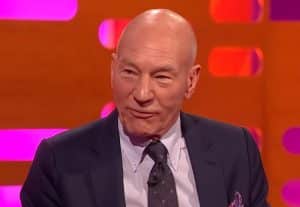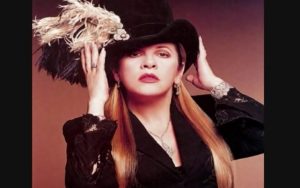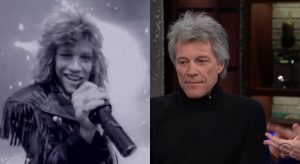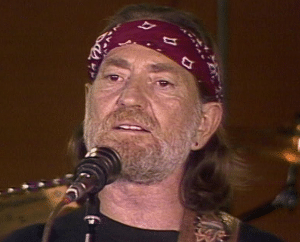20 Iconic Songs Titled With A Girl’s Name
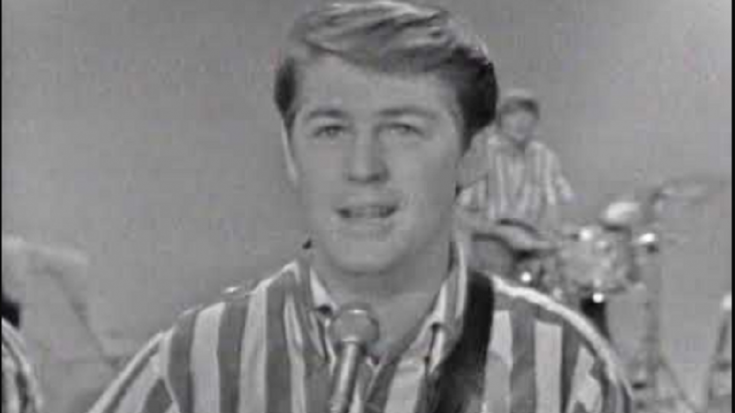
The Ed Sullivan Show / Youtube
Music is full of hidden stories, and sometimes, those stories begin right in the title. Have you ever stopped to think about how many songs feature a woman’s name? From pop ballads to rock anthems, these tracks weave narratives and emotions around their female titles.
This curated playlist isn’t just about catchy tunes with girls’ names – it’s about the deeper connection these songs create. Whether inspired by a real person, a figment of the imagination, or somewhere in between, these tracks capture the essence of their leading lady. Think of the heartbreak in Dolly Parton’s “Jolene” or the whimsical wonder of The Beatles’ “Lucy in the Sky With Diamonds.”
With thanks to Ranker.com, this crowd-sourced celebration is for music lovers who understand the unique power a name holds within a song. It’s about finding those tracks, hidden gems or chart-topping hits alike, that resonate deeply.
20. “My Sharona” – The Knack (1979)
The Knack’s debut single “My Sharona” exploded onto the scene in 1979, topping the US charts and becoming the song of the year. This catchy tune, famous for its stuttering intro and suggestive lyrics, was inspired by 17-year-old Sharona Alperin, who frontman Doug Fieger met by chance.
Their connection fueled not only “My Sharona” but also several other tracks on the band’s debut album, including the even bolder “That’s What Little Girls Do”. The album’s success, pre-selling over a million copies due to the single’s popularity, cemented “My Sharona” as a disco-killer, but also cast a long shadow. The band struggled to replicate its lightning-in-a-bottle success, forever linked to the song that launched their career.
19. “Runaround Sue” – Dion (1961)
Dion’s “Runaround Sue” isn’t just a catchy tune; it’s a cautionary tale wrapped in a doo-wop beat. The song chronicles the narrator’s frustration with a non-committal woman named Sue, who leads men on without giving anything in return. Dion offers a friendly warning to others who might encounter Sue’s charms, urging them to avoid getting caught in her game.
Interestingly, the inspiration for the song came from a real-life Sue who lived near Dion. While Dion protects her identity, he revealed years later that she eventually settled down and even reached out to him, proving that even a “Runaround Sue” can have a happy ending.
18. “Barbara Ann” – The Beach Boys (1966)
Despite being a cover song, The Beach Boys’ “Barbara Ann” became a smash hit in 1966. Originally a moderately successful doo-wop tune by The Regents, The Beach Boys transformed it into a party anthem.
This unexpected success came during a pivotal time for The Beach Boys. While fulfilling a record company request for a holiday album, they were secretly crafting their groundbreaking Pet Sounds masterpiece. “Barbara Ann” was born out of a studio recording session that doubled as a party, with friends dropping by and their playful chatter even making the final cut on the album.
17. “Ruby Tuesday” – The Rolling Stones (1967)
The Rolling Stones weren’t expecting “Ruby Tuesday” to be a star. Originally released as the B-side to the more suggestive “Let’s Spend the Night Together”, many American radio stations found the A-side too racy for airplay.
This twist of fate turned “Ruby Tuesday” into a surprise hit, topping the charts and becoming the band’s fourth #1 single in the US. Despite its unexpected rise to fame, “Ruby Tuesday” remains a beloved classic in The Rolling Stones’ vast catalog.
16. “Maggie May” – Rod Stewart (1971)
Rod Stewart’s “Maggie May” wasn’t just a catchy tune – it was a veiled account of a life-changing encounter. The song recounts a youthful experience Stewart had at the 1961 Beaulieu Jazz Festival, where a chance meeting with an older woman led to his first sexual encounter. While the song embellishes the details for dramatic effect, the core story reflects a pivotal moment in Stewart’s life.
Interestingly, the title “Maggie May” wasn’t inspired by the woman he met, but rather by a traditional Liverpudlian folk song about a prostitute. Despite the song’s suggestive lyrics about returning to school, Stewart actually chose to pursue a career in music after this experience, forever altering his path.
15. “Gloria” – Laura Branigan (1982)
Laura Branigan’s signature song, “Gloria,” wasn’t originally hers. It was a cover of an Italian love ballad by Umberto Tozzi. While Branigan’s team initially considered translating the lyrics or even changing the love interest to a male “Mario”, they ultimately decided to reinvent the song entirely. Branigan’s version became a character study of a woman on the fast track, a stark contrast to Tozzi’s romantic ode.
Despite initial concerns about its European sound, “Gloria” became a breakout hit for Branigan. Interestingly, it found early success within the LGBTQ+ community before becoming a mainstream sensation.
14. “Bette Davis Eyes” – Kim Carnes (1981)
Kim Carnes’ iconic “Bette Davis Eyes” wasn’t actually written for her. The song originated in 1974, penned by Donna Weiss and Jackie DeShannon after watching the classic Bette Davis film Now Voyager. DeShannon even recorded her own version a year later.
But it was Carnes’ 1981 rendition that rocketed to superstardom. The song spent a whopping nine weeks at the top of the Billboard Hot 100, becoming the biggest song of the year and the second biggest of the decade. Its international success mirrored its US dominance, topping charts around the globe. The song’s impact even reached Hollywood royalty, with Bette Davis herself expressing her delight at being woven into modern music history.
13. “Come On Eileen” – Dexys Midnight Runners (1982)
DMR’s 1982 song “Come On Eileen” wasn’t just their final track for the album Too-Rye-Ay, it became their biggest hit. Already established in the UK and Ireland with previous chart-toppers, “Come On Eileen” dominated both countries and even crossed the Atlantic to become a number-one single in the US.
Lyrically, the song is a blend of working-class nostalgia and youthful rebellion. The narrator urges Eileen to escape their crushing hometown and restrictive lives through music and passion. Originally written as a tribute to its musical influences, the chorus was later transformed into a passionate plea directed at Eileen.
12. “Angie” – The Rolling Stones (1973)
The Rolling Stones’ ballad “Angie” appears on their 1973 album Goats Head Soup. While credited to both Mick Jagger and Keith Richards, the inspiration for the lyrics remains a mystery. Richards claims the name “Angie” was random, while Jagger’s contributions might reflect his own split with Marianne Faithfull, according to NME.
Despite the ambiguity of its origin, “Angie” resonated with audiences. The song features a unique touch – Jagger’s initial vocal guide, faintly audible throughout the final recording, creating a haunting “ghost vocal” effect.
11. “Proud Mary” – Creedence Clearwater Revival (1969)
John Fogerty, frontman of Creedence Clearwater Revival, once detailed the origins and recording of their hit “Proud Mary”, later covered by artists like Tina Turner and Solomon Burke. The song began with just a title – “Proud Mary” – jotted down in a notebook in 1967. Inspiration struck Fogerty upon receiving his military discharge in 1968. He combined a chord riff inspired by Beethoven’s Fifth Symphony with lyrics referencing riverboats, fueled by his love for Mark Twain and Stephen Foster.
Despite initial struggles with the band arrangement and Fogerty’s perfectionist tendencies with overdubbing vocals and guitar, “Proud Mary” was released in January 1969. The song became a major hit, peaking at number two on the Billboard pop chart for three weeks.
10. “Peggy Sue” – Buddy Holly (1957)
A rock and roll classic, “Peggy Sue” was Buddy Holly’s second hit, climbing the charts in the US, Canada, and even across the Atlantic. Interestingly, it was his first solo success, not credited to his band The Crickets.
The song’s origins are steeped in a playful back-and-forth. Originally titled “Cindy Lou” after a family member, it was drummer Jerry Allison who nudged Holly to rename it for his then-girlfriend Peggy Sue Gerron. A recording mishap even led to a new beat for the song – when the engineer threatened to revert to the original title due to Allison’s mistakes, his drumming warm-up caught Holly’s ear and became the foundation of the iconic rhythm.
9. “Brandy (You’re a Fine Girl)” – Looking Glass (1972)
A crowning jewel on Looking Glass’ 1972 self-titled debut album, “Brandy (You’re a Fine Girl)” soared to the top of the Billboard Hot 100 chart. Its catchy melody transcended generations, finding its way into popular culture through films like Lords of Dogtown and even becoming a plot point in Guardians of the Galaxy Vol. 2.
The song’s influence even extended beyond music, with a notable surge in the name “Brandy” for newborns following its release. “Brandy” continues to resonate with modern audiences, with artists like Kenny Chesney and the Red Hot Chili Peppers adding their own spin to the classic during live shows.
8. “Roxanne” – The Police (1978)
“Roxanne,” a song by The Police, tells the story of a man infatuated with a prostitute named Roxanne. Sting’s lyrics plead with her to leave behind her life on the streets.
Beyond its captivating melody and vocals, “Roxanne” boasts a unique origin story. As the band began recording, Sting made a comical misstep – literally sitting on the piano in the studio. The resulting chord and laughter are preserved in the opening moments of the song, with Sting even receiving a playful credit for playing “butt piano”.
7. “Rhiannon” – Fleetwood Mac (1975)
Stevie Nicks’ “Rhiannon” is a cornerstone of Fleetwood Mac’s discography, consistently ranking among the greatest songs ever written. Inspired by the legend of a Welsh goddess or witch, the song perfectly encapsulates Nicks’ mystical songwriting style.
Originally appearing on the band’s self-titled 1975 album, their second-best selling record, “Rhiannon” took on a life of its own during live performances. Nicks’ dramatic introductions and the band’s intense energy transformed the song into a theatrical spectacle that transcended the radio-friendly single.
6. “Eleanor Rigby” – The Beatles (1966)
Marking a stark shift from their early pop hits, “Eleanor Rigby” delves into themes of loneliness and isolation. This somber ballad stands as an early example of the Beatles’ willingness to experiment, incorporating elements of baroque pop evident in the lush string arrangements.
Producer George Martin embraced their artistic evolution by pioneering new recording techniques. In this case, Martin defied convention by placing microphones close to the string instruments, creating a distinct, punchy sound that startled the unaccustomed session musicians. Interestingly, “Eleanor Rigby” is the only Beatles song where none of the band members play an instrument, relying solely on the string ensemble.
5. “Lola” – The Kinks (1970)
The Kinks’ “Lola” tells a curious story of a young man encountering an attractive transvestite. Songwriter Ray Davies claims inspiration came from a night his manager spent dancing with a transgender woman in Paris. However, drummer Mick Avory suggests his own experiences frequenting transgender bars in London provided the spark.
Released as the lead single for their eighth album, “Lola” became a major hit, reaching the top 10 in the US and narrowly missing the number one spot in the UK. This catchy song, despite its unconventional subject matter, cemented The Kinks’ place in the Rock and Roll Hall of Fame.
4. “Billie Jean” – Michael Jackson (1983)
Michael Jackson’s iconic “Billie Jean” spins a fictional narrative about a woman claiming to be the mother of his child. This Grammy-winning song, the second single from his blockbuster album Thriller, topped charts around the world, solidifying Jackson’s status as a global superstar.
While the song ignited speculation about Jackson’s personal life, the inspiration for the song itself was far simpler. In an interview, Jackson revealed he started with a strong bass hook in mind, crafting the song around that infectious groove. Further clarifying the song’s fictional nature, Jackson explained in his autobiography that Billie Jean wasn’t a single person, but rather a composite character inspired by experiences his brothers had faced with false paternity claims.
3. “Lucy in the Sky With Diamonds” – The Beatles (1967)
Inspired by his son Julian’s artwork, John Lennon penned the now-iconic “Lucy in the Sky With Diamonds”. Julian, fresh from preschool, presented his father with a drawing titled “Lucy in the Sky With Diamonds”, depicting his friend Lucy amidst a starry sky. This simple act of childhood creativity sparked the song’s creation.
The song’s psychedelic imagery and its release during the “Summer of Love” fueled speculation about LSD references. The acronym formed by the song’s title (“Lucy In the Sky with Diamonds” – LSD) certainly added to the theory. However, John Lennon consistently denied any drug connections. While he didn’t shy away from drug references in other songs, “Lucy in the Sky With Diamonds”, according to Lennon, was purely inspired by his son’s artwork and a dash of Alice in Wonderland influence.
2. “Sweet Caroline” – Neil Diamond (1969)
Neil Diamond’s “Sweet Caroline” boasts a fascinating backstory. Inspired by a photo of a young Caroline Kennedy, the song’s lyrics however were penned years later and dedicated to Diamond’s wife Marsha at the time.
Released in 1969, “Sweet Caroline” became a hit, reaching the top 10 in both the US and Canada. Its popularity transcended borders, finding a devoted audience in Europe two years later. An unexpected twist emerged decades later – “Sweet Caroline” became a beloved tradition during Boston Red Sox home games, with fans belting out the chorus in unison during the eighth inning.
1. “Jolene” – Dolly Parton (1973)
Dolly Parton’s “Jolene” captivated audiences upon its release in 1973, becoming a number one country hit in both the US and Canada. This song’s impact transcended genre, reaching international charts in six countries and achieving top 10 status in the UK and Ireland.
“Jolene” paints a picture of heartbreak and desperation. Dolly pleads with a beautiful woman named Jolene to leave her husband alone. This relatable theme resonated with listeners, leading to numerous covers across genres. The inspiration for the song itself is a delightful blend of reality and happenstance. Parton based Jolene’s name on a young fan, while the character’s seductive nature stemmed from a flirty bank clerk who crossed paths with Parton’s husband.






